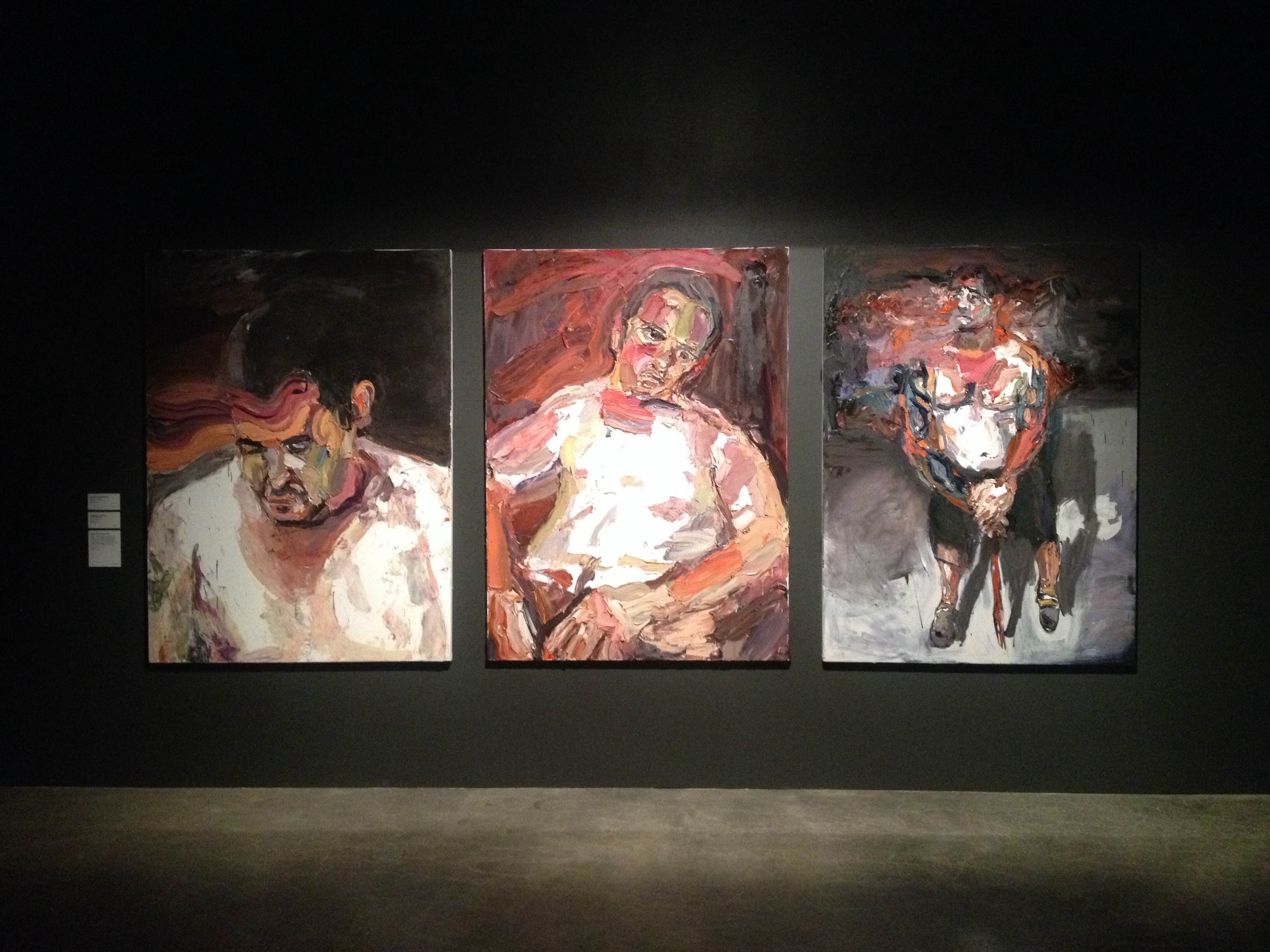View the incredibly raw emotional turmoil and psychological journey of military service through the eyes of Archibald Prize-winner Ben Quilty.
Ben Quilty: after Afghanistan — a series of powerful portraits depicting the realities of war opens at the Griffith University Art Gallery (GUAG) at South Bank this weekend.
This travelling exhibition from the Australian War Memorial focuses on the body of work Ben produced as part of his official war artist commission to Afghanistan in 2011.
Though the commission follows a great tradition established during the First World War, Dr Brendan Nelson, Director of the Australian War Memorial, explains the style of Ben’s work does not.
“These works do not portray heroic battle scenes from the war, nor do they seek to specifically depict the extraordinary work and sacrifice undertaken on Australia’s behalf by those who have served in uniform,” he says.
“Rather, these portraits move beyond the physical exterior of the subject by telling an even more powerful story — the emotions, experiences and impact of war felt by those whom Ben met and painted.”
The decision to take up the commission however, was not as easy one to make for the 40-year-old artist, husband and father of two.
“I never wanted to go there, to be quite honest. I didn’t want to go and risk my life. But I did feel strongly that this was a duty that I had to do for some reason,” he admits.
With much of his earlier work commenting on what he describes as the “glorification of decline” within Australian culture, and in particular the self-destructive nature of males, accepting the commission seemed like a logical step in the progression of his career.
“The opportunity to go and work with these young men in Afghanistan was almost the height of my exploration of the way masculinity plays itself out in culture,” he says.
After spending three weeks with the servicemen and women who formed part of Operation Slipper across Kabul, Kandahar and Tarin Kot, “surreal, dusty and violent places,” Ben says he felt an overwhelming need to tell their stories.
“Afghanistan is a very emotional place. It exposes the basics of humanity right there in your face: matters of life and death, the biggest themes an artist could ever imagine,” he says.
“I realised within a few days that the responsibility I had to represent these young people was probably the most important thing I’ve ever been asked to do.
“So I started doing drawings of the soldiers and hearing their stories about their experiences in this very wild place.”
The exhibition’s curator, Laura Webster, explains that this profound experience of spending time with the soldiers in an informal way is what led Ben to then invite some he had met in Afghanistan to his studio in the Southern Highlands of New South Wales for live sittings.
“Ben didn’t want to limit his ability to fully articulate the soldier’s experiences and emotions by relying on photographs he had taken during his deployment,” she says.
“When the soldiers arrived at his studio, he suggested that they sit for their portraits naked — he needed to see the skin, the body, removed from its protective layers of uniform and body armour.
“As a result, he has created empathetic works that prompt viewers to establish a personal connection with subjects whose experiences differ vastly from their own.
“By helping the viewer to understand their intense experiences, this body of work serves as a powerful reminder of the ability of portraiture to convey the precarious nature of the human condition,” she says.
Ben says he had extreme feelings about the smell, sound and emotion of being in Afghanistan and in hearing the soldiers speak openly about such difficult memories and the complex reactions felt on returning home.
“I hope that when people walk into this exhibition they will get more of a sense of what is like to be in Afghanistan.
“Not what it looks like, but what it feels like. What it is like to survive an experience such as these Australians have been through,” he said.
According to Naomi Evans, Acting Director at GUAG, the exhibition is true testament to Ben’s insightfulness as an artist.
“These paintings reveal an empathetic and considered approach to portraiture, which privileges humanity and the absolute value of each personal life and experience within the controversial context of this war,” she says.
The free public exhibition runs through until Saturday 7 June and will be officially opened on Friday 11 April from 6.00pm.
GUAG is open from 10am — 4pm, Tuesday to Saturday and is located at 226 Grey Street, South Bank.
IMAGES AVAILABLE ON REQUEST
MEDIA CONTACT: Lauren Marino, 0418 799 544, [email protected]
